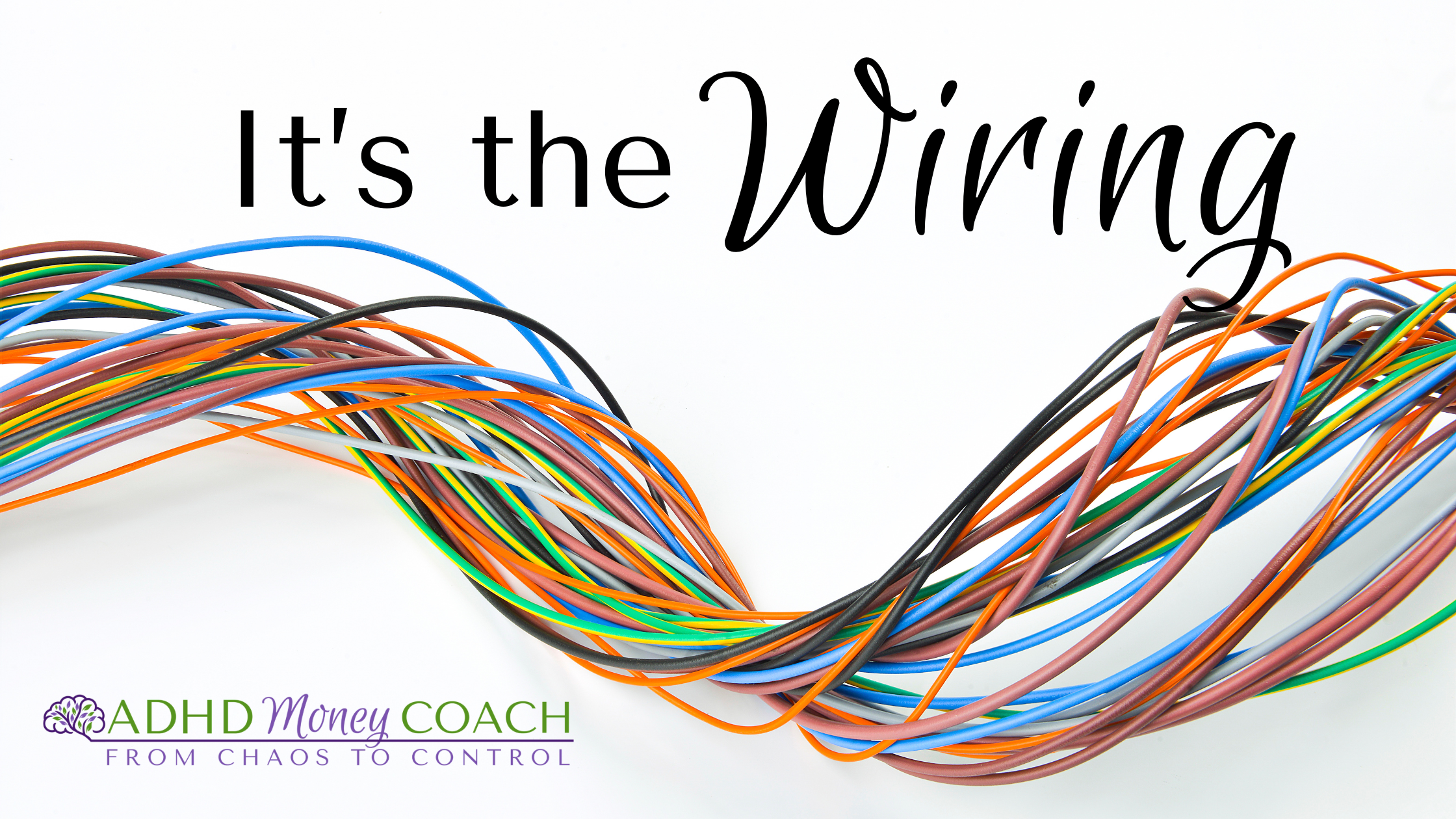It’s the Wiring.
My kids’ bathroom light flickers. They hate it, but always want to decorate for Halloween. So I told them it’s our Halloween decoration. They wanted it fixed. I did what I could (changed the lightbulb) and it continued. Eh, it’s the wiring! It’s going to take someone more skilled than me to fix that flicker! (no need to worry, hubby fixed it.)
Wires grouped together, twisting across the picture. With the words “Its the wiring” on top.
Emotional Spending
Emotional spending happens when we use shopping to soothe how we’re feeling instead of buying out of real need. Maybe it’s sadness, loneliness, stress, or even boredom, whatever the trigger, the brain learns that shopping provides relief. For ADHD brains, this cycle is even stronger. Due to the neurotransmitter dopamine.
ADHD & Dopamine
Dopamine is a neurotransmitter associated with motivation, reward, and attention. When someone has ADHD, they have lower dopamine transporter pathways, meaning that the dopamine we do produce doesn’t make it to the areas of the brain where it is needed. And research is now showing that we release less dopamine as a reward.
The dopamine shortage can cause havoc with our wallets. While we release less dopamine, it still makes us feel good when we do release it. And making purchases does just that. If you buy something that has loads of potential, you will feel good about the purchase, because ADHDers are looking for that dopamine. Our brain starts to learn that shopping = feeling good. Because each time we purchase that item with potential, we feel better. We learn to repeat the same actions when we are feeling certain emotions. And the emotions can be different for everyone. Either way, shopping makes us feel better. Think back to the last time you bought your favorite sweater. How did it make you feel?
We struggle with emotional and impulsive spending because of how our brain is wired. Shopping becomes more than just a transaction; it turns into a coping mechanism. When life feels heavy, uncertain, or overwhelming, reaching for something new offers a quick way to escape those emotions. For some, it’s clothes or home décor. For others, it’s gadgets, craft supplies, or another Target haul. In that moment, the purchase isn’t really about the item itself; it’s about the comfort and control it promises. Over time, these patterns settle in like grooves our brain naturally follows, pulling us toward spending before we’ve even realized what’s happening. That’s why this struggle isn’t solved with more willpower, stricter budgets, or harsher self-talk. It’s not about being lazy or careless; it’s about the underlying wiring that makes emotional spending such a strong pull in the first place.
Just like a flickering light that doesn’t stop, no matter how many times you change the bulb, emotional spending isn’t fixed by quick surface solutions. The issue isn’t the bulb; it’s the wiring underneath.


